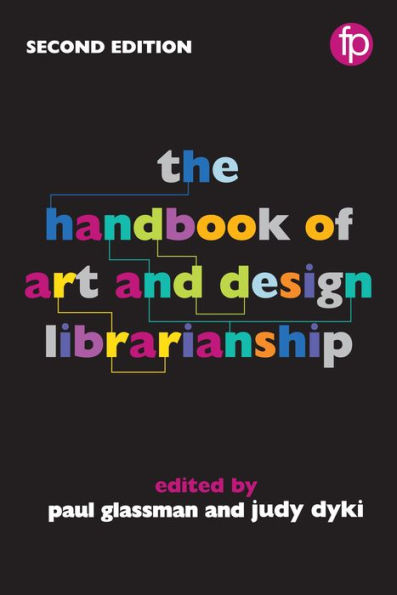The Handbook of Art and Design Librarianship integrates theory and practice to offer guidelines for information professionals working in art and design environments who need to support and anticipate the information needs of artists, designers, architects and the historians who study those disciplines. Since the first edition of this title, the world of art and design libraries has been transformed by rapid advances in technology, an explosion in social media and the release of new standards and guidelines. This new edition, offering mostly entirely new chapters, provides an accessible, fully updated, guide to the world of academic art and design libraries from a range of international experts who reflect current practice at a global level.
Coverage includes:
- case studies and library profiles, providing benchmarks for developing facilities
- teaching and learning, including the ACRL Framework, teaching with special
- collections, meta-literacies, instructional design and cultural differences
- developments in institutional repositories, digital humanities and makerspaces
- contemporary library design, spaces for collaboration and sustainability.
This book will be useful reading for students taking library and information science courses in art librarianship, special collections, and archives, as well as practising library and information professionals in art and design school libraries, art museum libraries and public libraries.
The Handbook of Art and Design Librarianship integrates theory and practice to offer guidelines for information professionals working in art and design environments who need to support and anticipate the information needs of artists, designers, architects and the historians who study those disciplines. Since the first edition of this title, the world of art and design libraries has been transformed by rapid advances in technology, an explosion in social media and the release of new standards and guidelines. This new edition, offering mostly entirely new chapters, provides an accessible, fully updated, guide to the world of academic art and design libraries from a range of international experts who reflect current practice at a global level.
Coverage includes:
- case studies and library profiles, providing benchmarks for developing facilities
- teaching and learning, including the ACRL Framework, teaching with special
- collections, meta-literacies, instructional design and cultural differences
- developments in institutional repositories, digital humanities and makerspaces
- contemporary library design, spaces for collaboration and sustainability.
This book will be useful reading for students taking library and information science courses in art librarianship, special collections, and archives, as well as practising library and information professionals in art and design school libraries, art museum libraries and public libraries.

The Handbook of Art and Design Librarianship
368
The Handbook of Art and Design Librarianship
368
Product Details
| ISBN-13: | 9781783302024 |
|---|---|
| Publisher: | Facet Publishing |
| Publication date: | 10/24/2017 |
| Sold by: | Barnes & Noble |
| Format: | eBook |
| Pages: | 368 |
| File size: | 11 MB |
| Note: | This product may take a few minutes to download. |
